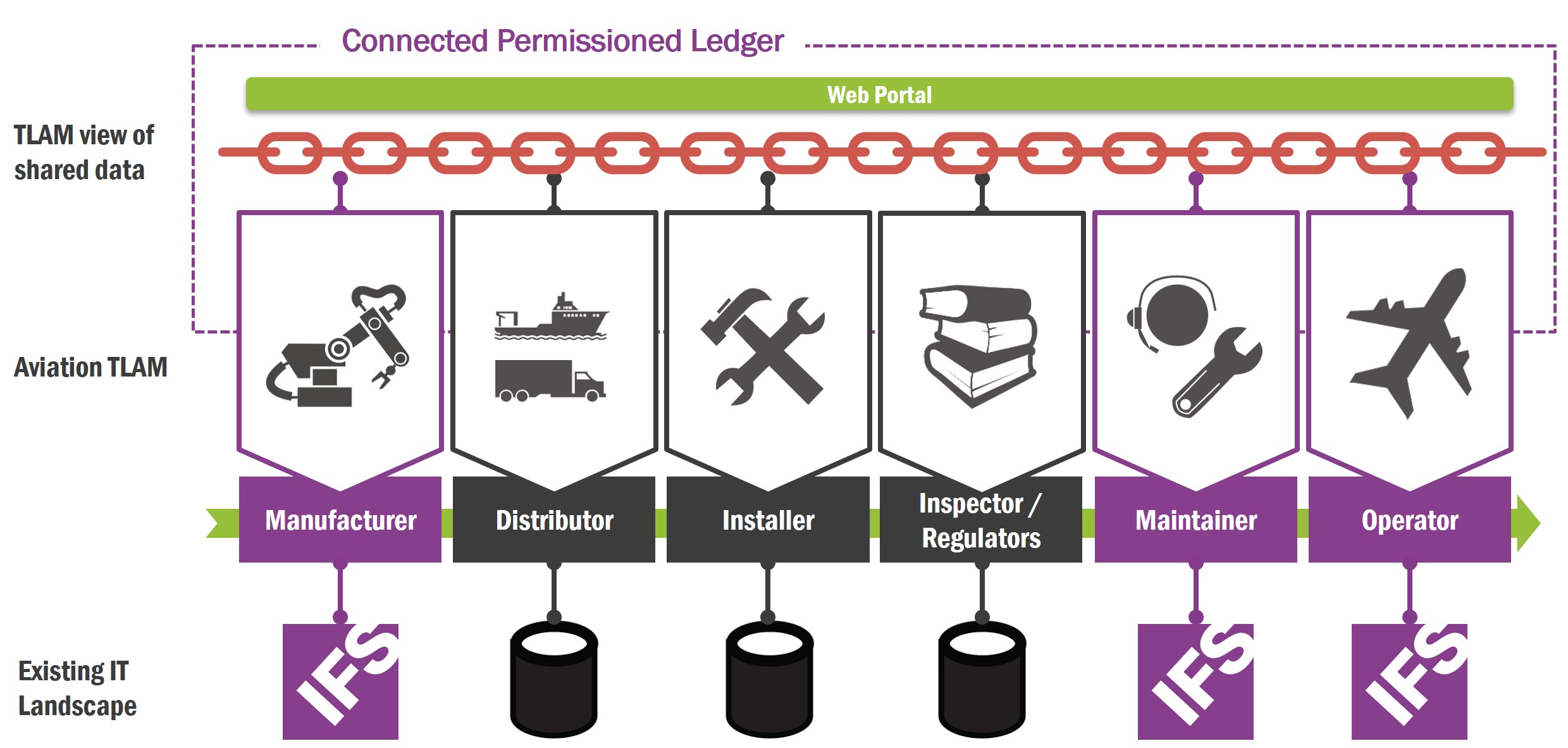How through-life asset management can be improved using distributed ledgers throughout the chain.
IFS Labs’ research into Blockchain
Blockchain is one of the most talked-about and intriguing technologies today. Although first described in 1991, it got its first real implementation and public attention in 2009 as the technology behind Bitcoin. Blockchain or distributed ledgers, in general, have the potential to truly disrupt business.
Blockchain can be very complex, but at its heart the idea is simple. Simply said, it is a huge, global distributed ledger or database running on many devices and open to anyone within the Blockchain. On the Blockchain, information and anything of value can be stored. Its purpose is to ensure a 100% secure, verifiable and traceable database protocol.
Already, many people are exploring use cases beyond Bitcoin. Many of those, but definitely not all, are related to what I call, “financial oriented use cases.” Be it reducing costs by keeping property ownership and records on Blockchain or using it to track high-value goods such as diamonds, all cases are about that secure, verifiable and traceable storage of information.
Although Blockchain is still far from hitting the mainstream (if ever), IFS Labs is already researching the impact it might have on existing business applications. Looking beyond the “traditional” financial implementations, what are the most important benefits and challenges associated with the implementation of Blockchain technology? In this blog, I will not delve into the exact workings, but I will explain one of these potential non-financially-oriented use cases.
How Blockchain could potentially disrupt the aviation industry
Let’s have a look at the highly regulated aviation industry. If you take modern aircraft, they consist of 2–3 million parts. For these parts, knowing where they came from, in other words, their provenance, is very important in assuring that they have the right specification and they are not counterfeit. In addition, many of these parts are so-called “tracked items.” Not only their provenance, but the entire maintenance history of these parts need to be transparent.
Today, the many participants in the lifecycle of such an asset, from manufacturer to transporter to maintainer to operator, each have their own disparate systems. Consequently, it’s quite difficult to build up that one, single picture of the truth when looking at that asset’s entire lifecycle. Often, these records can be incomplete or still on paper, and communication between the different participants is often done on paper or even verbally. Lack of standardization leads to limited traceability and the cost of compliance, if even possible, can be very high.
So what if all of these participants submitted a transcript of the important transactions into a purpose-specific, distributed ledger to where only those participating would have access?

The manufacturer would initially bring the Blockchain for the asset to life and each participant would add the relevant blocks to it. The distributor would let the chain know that it was transported from point A to point B, while the operator would register the number of flight hours that the asset has undergone.
Immediately, you would have a 100% verifiable, 100% traceable and 100% trustworthy history of the asset’s lifecycle, while at the same time, each individual participant still has the features and benefits of their own business applications to run their business.
If we, meaning the technology consortiums, the regulators like the FAA, the aviation participants and the software vendors like IFS, would be able to pull this off, the benefits could be tremendous.
The potential benefits could include:
- Improved data quality
- Single, traceable record of serial numbers
- Better and more accurate maintenance history
- Increased trust between service providers, suppliers and operators
- Cheaper compliance, increasing airworthiness
In the end, this all leads to a lighter administration, lower costs and higher system utilization. Blockchain has quite the disruptive potential for aviation, I would say.
Learn more about IFS Labs at ifs.com.
Do you have questions or comments about Blockchain?
We’d love to hear them so please leave us a message below.
Marcel Bril
Nice article and good business case, Bas!
Elizabeth Ziegler
Love Your blog! I discovered it today and spent few miniutes on reading. Keep it up!
Christin
Thanks for the excellent post
Frank Best
Thanks for the interesting usecase. Some questions remain unclear though:
1. sounds like you’re suggesting one blockchain per component, which would result in thousands of blockchains per aircraft. Would it make sense to have one blockchain per airplane? or one per airplane manufacturer?
2. It’s not clear to me what the advantage of the blockchain is compared to a central database at the airplane manufacturer where all data is stored centrally?
Regards
Frank
Ashen Pitigala
Hi,
Need to know how this Blockchain impact to the Life Insurance Industry.
Also, how this works for domestic growth-oriented sectors such as ICT, Healthcare, Retail, Financial Services, Automobiles, and Leisure. (Sri Lanka)
Gayathma
Hi, Nice article. I would like to know how blockchain can be used for procurement? I’m confused whether smart contracts can run the whole procurement process or it can be used only for payments?